Happy Holidays! I hope that all my readers enjoyed Christmas on Tuesday or whenever they celebrated it. I hope that my Canadian and British readers also enjoyed Boxing Day yesterday. Although we live in Southern California, my family and I had the delightful gift of a white Christmas. It snowed from 7 AM until noon, giving us the first lovely dusting of white stuff of the year. This was the first white Christmas our mountain village has had in ten years. We aren’t ready to give up Christmas yet, so we are going to keep celebrating, at least through the Twelve Days of Christmas. During this time, I hope that you continue to enjoy lovely Code holiday films.

In honor of the continued Christmas celebration, I am going to breen a Christmas film today for Breening Thursday. Today’s selection, which is the last film I will breen this year, is a Rating System Era remake of a Code Christmas favorite. The film is Miracle on 34th Street from 1994.
Miracle on 34th Street was made by 20th Century Fox in 1947 with Maureen O’Hara, John Payne, Edmund Gwenn, and a young Natalie Wood. The movie tells the story of a divorced mother who is an important employee at the New York City Macy’s. She has taught her unbelieving cynicism to her daughter, a sweet and intelligent six-year-old who doesn’t believe in Santa Claus because of her mother’s harsh attitude toward fairy tales and fantasy. However, their disbelief is challenged when a kind, bearded gentleman named Kris Kringle takes the job as the Macy’s department store Santa Claus. The jolly old man’s insistence that he really is Santa Claus seems crazy, but his benevolent influence begins to affect everyone in Macy’s and throughout New York.
The 1994 remake follows the original story quite closely. Instead of being a Macy’s employee, our leading lady, Dorey Walker (Elizabeth Perkins), works at Cole’s Department Store. As in the original, she has a tentative, budding romance with a young lawyer, Bryan Bedford (Dylan McDermott). Her precocious daughter, Susan (Mara Wilson), is as disbelieving of Santa Claus as ever. The jolly old elf himself (Richard Attenborough) is quick with a bright smile and happy to send customers to other stores to find the right gifts.
Essentially, the two films’ plots aren’t that different. However, the societal changes which had occurred in almost fifty years are evident. The style of the second film reflects movie trends of the 1990s. There is a lot more drama in the telling of the story, in the dialogue, in the acting, and in the background music. When you compare the two, the 1947 version seems very subtle. However, the most significant difference between the films is the moral acceptability. The 1940s film was made during the Greater Breen Era. Although considered a family film, the remake is rated PG. Thus, since even G-rated films usually feature some Code-violations, this PG film contains multiple unacceptable elements. Let’s consider this film to see what ultimate impact these elements have on the general tone of the film. Let the breening begin!
In the opening of the film, New York City is preparing for Cole’s Department Store’s great Thanksgiving Day parade. Among the crowds on the streets, we see a jolly old man with a white beard. This is the Kris Kringle of our story. As he waits at a crosswalk, the old man is observed by a little boy with his grandfather. The grandfather tells the other man that his grandson thinks he is Santa Claus. After the stranger leans down and whispers, “I am,” in the boy’s ear, the child gasps in shock as the man walks away. After he has left, the boy says, “Nuts! I should have gotten his autograph.” The italicized word is a forbidden expression. The boy should say an acceptable expression like Rats instead.
Later, Kris Kringle finds his way over to the Santa Claus display, where the tippling, belligerent Santa Claus named Tony receives unwanted advice from the well-meaning Mr. Kringle, who believes that he should be “impersonated” correctly. When he realizes that the oaf in the Santa suit has been drinking, he tells him that he is disgraceful. The rude man responds, “And you’re a pain in the –,” using the vulgar abbreviation of buttocks. The blank could be replaced with the word neck, or the line could be eliminated entirely. The entire exchange has a very crass tone due to Tony’s bellicose, rude behavior. He is disrespectful and disgusting. Later, he says, “Kiss my –,” but he is cut off before he can finish his sentence. This should be eliminated entirely. The grand finale of the scene occurs when Tony tries to climb onto his sleigh. His pants fall down, revealing his posterior to the horrified children. This is so distasteful and so totally unnecessary. Then, when cracking his whip, he leans too far backward, causing himself to fall backward. The entire sleigh falls backwards after him and lands on top of him! That is so ridiculous and unbelievable, it isn’t even funny. I don’t know how people can criticize the Code for whitewashing films so much that they became unrealistic. I think that most Code films were generally more realistic than later movies, which have a tendency to be overly-dramatic and sensationalistic. This whole scene has a very crude tone. The three objectionable elements should be removed, and the crass tone of the whole exchange could be reduced by eliminating the ruder lines of the nasty Santa Claus.
Soon after, we see Dory for the first time. She is wearing a business suit with a very short skirt. The dark stockings don’t make it less indecent. Throughout the film, she and other women are shown in many unacceptably short skirts. It is especially inappropriate for a mature woman with a daughter like her. All her skirts should be lengthened to her knee, as should those of the other women.
Later that day, Dorey arrives at her apartment and tells her daughter about the incident with the parade’s Santa Claus. Tony was replaced by an ideal man, Kris Kringle, who appeared in the crowd. Dorey explains that Tony was drinking. “Bombed?” Susan blandly asks. That’s a rather vulgar slang word for a six-year-old girl to be using. That line should be eliminated. The sequence could be modeled after the situation in the original, in which Mrs. Walker refers to the janitor’s condition on last New Year’s Eve to explain the fired Santa Claus’s state.
Later in the scene, Susan says that she has finished watching the parade. She explains that there is nothing left but “people sweeping up horse poop.” This is very vulgar and should be eliminated.
Next, the villain enters the story. It comes in the form of Cole’s Department Store’s rival, Shopper’s Express. In the original film, there was a normal but civil rivalry between Messrs. Macy and Gimbel because of the competition between their department stores. In this version, the owner of Shopper’s Express, Victor Landberg, is depicted as some sort of monster. Shown always in a dark, shadowy room, the deep-voiced character is portrayed as a type of Hitler, a ruthless dictator who will stop at nothing to crush out his competitor and brainwash his juvenile customers. Personally, I think that the drama of this situation is ridiculous. Why couldn’t it just be normal American business rivalry? Why must it be a huge conspiracy plot? I think that the numerous conspiracy theories in films are dangerous. They make people nervous and suspicious. The connection between the drunken Santa Claus and the rival department store is fine. However, the depiction of Shopper’s Express and its employees should be toned down. The characterization is too nefarious to even be believable.
As Kris Kringle is riding through the streets in the parade, Victor Landberg’s primary henchman, Jack, is seen in the crowd. He is speaking on his cellphone to Mr. Landberg, communicating the success of the competitor’s parade. He refers to the success of the new Saint Nicholas. Jack says, “I hate to say this, but he’s one – of a Santa Claus.” As you can guess, the blank does not stand for heaven. Instead, he should say, “He’s one great” or “terrific Santa Claus.”
Once Mr. Kringle is working in the Cole’s toy department, he begins to implement the revolutionary idea that the most important thing is making children happy. Thus, he advises their mothers to go to other stores if Cole’s doesn’t have the best product or price. One astonished mother goes to Mr. Shellhammer, the general manager, to tell him about Santa Claus’s unprecedented behavior. In a thick New York accent, she explains that she was looking for a barf gun for her son. This is a disgusting product which should be changed to something more suitable, such as a water gun or another inoffensive toy. Later in the conversation, the mother says that Cole’s goodwill policy has made a devoted customer out of her. She says, “From now on, I’m coming here for everything except toilet paper and bananas.” The italicized product is an example of comedie de toilette. The inappropriate item could be replaced with something like Kleenexes.
The evil plot continues as Victor Landberg and his two minions, Jack and Alberta, progress with their scheming to take down their competitor’s goodwill Santa Claus. The next step in the plan needs help from Tony, the sottish bum who is eager to get back at his successor. When arranging the plan, Jack meets Tony in a dark, smoky bar full of drunken Santa Clauses. This depiction of the crude, low-life men who are playing the symbol of holiday cheer is very disturbing. The scene should be moved to a less sinister bar with normal patrons and no rock-and-roll Christmas music. During their conversation, Tony refers to Mrs. Walker as “that broad.” The italicized word is a vulgar, forbidden expression for a woman. It should be replaced with the inoffensive term dame.
One evening, Mr. Kringle babysits Susan. As he is tucking her in, she tells him what she really wants for Christmas, a house, a father, and a baby brother. Although he wants to grant her wishes, Mr. Kringle tries to explain the difficulty of her desires. A house is large and expensive, a father isn’t a present you can buy, and a baby takes a long time to be born. “Nine months,” Susan clarifies. “More if it’s late, less if it’s a preemie.” In our post-Code culture, we are no longer sensitive about discussing the conception, gestation, and birth of babies. However, in the old days of decency, these were considered delicate topics. I don’t think that Susan’s obstetrical remark about the time until babies’ birth are necessary.
Later, Tony visits the Cole’s toy department to harass Kris Kringle in front of the children. A young female assistant dressed like an elf asks him to leave the line, which is for children. However, Tony won’t be shooed. Referring to the employee, he says to Mr. Kringle, “Hot little helper, huh, Santa? Is she the one that puts the twinkle in your eye?” This is very vulgar. Firstly, it is forbidden to refer to a woman as hot. Secondly, the entire line is licentious and very inappropriate. It should be removed. In addition, his intimidating behavior toward Kris Kringle and the children is very distasteful. It should be toned down a little.
That night, Tony follows Kris home. As he is walking along the street, the villainous man comes up behind him and begins verbally taunting and harassing him. This scene is so repulsive and offensive that my family has always fast-forwarded through it. Tony shouldn’t make the vulgar, unacceptable remarks he does. He could enrage Mr. Kringle by saying that he only claims he is Santa Claus so that he can get a good job and make a lot of money and fame off a lot of gullible children. That would be sufficient provocation for Mr. Kringle to hit him on the forehead with his cane.
The frame-up with Tony leads to Mr. Kringle’s arrest. His case comes up before a New York judge. The judge receives the case’s papers from assistant district attorney Ed Collins. Mr. Collins says that the case is a “slam-dunk” because the man is out of his mind. Both men laugh at Mr. Kringle’s claim that he is Santa Claus. Mr. Collins remarks that Victor Landberg wants the case solved quickly, slyly commenting about the judge’s upcoming reelection. This whole situation is very disturbing. It is part of the huge conspiracy theory. For no good reason, the filmmakers are depicting a judge and an assistant district attorney as corrupt men who take bribes and yield to influence. An assistant district attorney should not refer to a case which will determine a man’s whole future as a “slam-dunk.” Also, there should be no casual allusion to the fact that Victor Landberg controls the court. During the Code years, corruption could be treated, as in Mr. Smith Goes to Washington from 1939. However, it had to be a main topic, not a passing line. Such casual references to corruption make people think that every politician is dishonest. That creates fear and mistrust in our legal system. It should be removed.
The court is not allowed to hastily close Mr. Kringle’s case, since Bryan Bedford decides to defend him. Dorey Walker challenges the executives of Cole’s Department Store to stand behind Mr. Kringle during this difficult time. She says that they need to decide if they believe in Santa Claus. Then, a huge “belief” campaign is begun. People throughout New York City are shown displaying their belief on signs, billboards, and pins. The background music is a rendition of “Joy to the World” with a heavy beat. That song is sacrilegious in that instance. It is a religious Christmas carol with strong Christian meaning. Its use in regard to Santa Claus could be offensive to Christians. It should be replaced with some secular song like “Santa Claus is Coming to Town.”
The court case becomes a dramatic affair filled with various witnesses and exhibits from both sides. Dorey and Susan are in the audience the whole time, watching. At one point, Susan becomes outraged at the way Ed Collins is treating Mr. Kringle. She stands up on her seat and yells, “Hey, you big jerk!” She subsequently tells him to leave Mr. Kringle alone. This outburst is very disrespectful and quite unnecessary. At the least, her calling him a jerk must be removed. Later, she sticks her tongue out at Mr. Collins; this too is disrespectful, unnecessary, and a bad example for children.
Eventually, an idea comes to Mr. Bedford of how to win the case for Kris Kringle. He asks Susan to give the judge a Christmas card. Inside the card is a dollar bill with the words In God We Trust circled. As Bryan planned, this makes the judge think about the unseen being in whom the Founding Fathers trusted. He makes a grand speech about the similarities between the belief in the existence of one unseen being and another. He says that the case’s purpose is not to prove the existence of God but that of Santa Claus, a being “just as invisible but just as present.” He ultimately states that, since the United States government prints its faith in God on bills, the court officially recognizes the existence in Santa Claus; he declares that Kris Kringle is Santa Claus and dismisses the case.
On the surface, one might think that mentioning the existence of God is some sort of compensating moral value. On the contrary, the situation is quite blasphemous. The judge is declaring that Santa Claus is just as present as God, ultimately making him equal to the Christian God and putting him up as a replacement. The tradition of Santa Claus is one which dates back many centuries in many forms in many countries. In these Christian countries, Santa Claus, or his local variant, existed alongside Christian belief in God and Jesus. However, in our secular American culture, Santa Claus has replaced the religious foundation of Christmas. This is a subject of great concern for many Christians.
In the original film, which was made during a time when Christianity was a strong force in America, there was no religion. It was a strictly secular film which dealt only with Santa Claus as a jovial spirit of generosity, not a god to be worshipped. I think it is much better to simply leave religion out of a film like this. The 1947 film was concluded very satisfyingly with a dramatic solution of the case. When Susan sends a letter to Mr. Kringle at the court, the postal workers get an idea about how to get rid of all the dead letter Santa Claus mail. Just as he thinks he is about to lose the case, Fred Gailey, the Bryan Bedford character, learns of all the mail which has arrived. He orders it to be brought into the court room. As attendants dump over a dozen bags’ worth of mail on his desk, the judge has no choice but to agree with the US Postal Service and declare that Mr. Kringle is Santa Claus. I think that this is a much more exciting conclusion. In addition, it makes a lot more sense than the end of the 1994 film’s court case. Just because he is reminded that America was founded as a Christian nation, the judge declares that a nondescript old gentleman is the one and only Santa Claus! There is no legal proof of any sort. I think that the original mail solution should be used in this film. It would be less objectionable, more dramatic, and a lot more believable.
Soon after, we see the defeated and furious Victor Landberg ranting to his two accomplices in his office. When Jack imprudently refers to Santa Claus as a real identity, Mr. Landberg is enraged. He says, “What the – is the matter with everybody?” The blank, which represents a forbidden swear word, is unacceptable. He could just say, “What’s the matter with everybody?”
After the court case, Kris Kringle has to solve the problems in the lives of the people who have helped him. He leaves notes for Bryan and Dorey, telling each to go to St. Francis at midnight. Convinced by the notes which they think are from each other, the two arrive at the cathedral at midnight. Seeing the priest and the obvious arrangement for a marriage ceremony, they begin talking on top of each other. Both say that the other must have arranged the situation. “You did this?” “I didn’t.” “You must have.” “I know you did.” “No, you did.” The exchange is very silly. It borders on a comic sequence. Since it is being performed in a church in front of a priest, it is unacceptable, since all scenes in places of worship of any denomination must be strictly serious. Each should seriously ask the other only once if he arranged it. Then, the priest should immediately say his line, “Are you ready?”
On Christmas morning, Dorey, Susan, and Bryan are driving out to the country to take pictures at a house for next year’s Christmas promotions. Susan insists that they are going to the house because of Mr. Kringle, but her mother says that they are just going because Mr. Shellhammer asked them to. Susan smiles and smugly says, “I’m sorry, Mother, but you’re entirely wrong.” Her tone and her entire attitude are very disrespectful. She doesn’t even seem like a little girl any more. I think that her role’s know-it-all dialogue makes her seem unrealistically old. She should just smile to herself and look out the window. It is a bad influence to show children speaking so disrespectfully to their parents.

At the end of the film, Susan tells her mother and new stepfather about her requests to Mr. Kringle. Realizing that she has already received a father and a house, she says that she’ll just have to wait for the third thing. As she begins to go upstairs, her mother asks her what her third desire was. She smiles and says, “A baby brother. See ya!” As she runs upstairs, Dorey and Bryan look at each other and then down at her stomach. This is unduly pointed and rather vulgar. They shouldn’t make a point about the very minute chance that Dorey could already be expecting a baby. They should just look at each other and smile shyly.
The final problem is a core one which was also in the original film. In both versions of the story, Mrs. Walker is divorced. That element caused the 1947 film to be condemned by the National Legion of Decency. Although the Code forbade divorce in spirit, it did not do so clearly in letter, so some films allowed divorce and remarriage. Due to the fact that the first film was made just a couple years after the end of World War II, Mr. Walker could have been killed in the war. Mrs. Walker’s bitterness and disillusionment could have sprung from her grief at having been left to raise her daughter alone. When talking about fairy tales of Prince Charming, she could have said, “Then, when he does come along, he goes off to war and gets….” She could then have broken off, unable to continue. The same situation could work in this film. Instead of in World War II, Mr. Walker could have been a soldier in the Gulf War. Perhaps Dorey didn’t want him to join the service. Perhaps he joined impulsively and against her wishes, leaving her alone in America with an infant daughter to fulfill what he considered his duty. She felt deserted and betrayed. Then, when he was killed soon after, she really became bitter. For that reason, she doesn’t believe in fairy tales, and she is reluctant to begin a new romance.
I have one other point of contention with this film. However, it is not really a Code issue. When I watched this film recently, I noticed for the first time just how similar the background music is to Tchaikovsky’s Nutcracker Suites. It’s absolutely stolen! Several melodies begin exactly like Tchaikovsky’s songs, having not only the same tune but the same instrumentation. Then, they change and go a different direction. However, it is still plagiarism. Musical theft isn’t technically a violation of the Code, but there was a lot less of it in film scores for Code films. Somehow, films were generally better when they had to be self-regulated. The watchful eyes of the PCA were like a strong parental hand. It is easy to make something naughty when you are just showing it to your friends or to strangers. However, if you have to show it to your mother or father, you suddenly feel embarrassed by your naughtiness. It is the same thing with filmmakers. The attentive review of Joseph Breen made them not only less prurient but less goofy, less manipulative, and less thieving. Although it isn’t mentioned in the Code, I think that a self-regulator could remark to a filmmaker that his score sounded rather familiar to a certain classical ballet score.
That concludes my breening of this film! If all the changes I suggested were made, what is now a PG film would be better than a G film; it would be a Code film, worthy of a PCA Seal of Approval! As I have stressed before, there is a significant difference between PCA approved films from the Breen Era and G-rated films from the Rating System Era. I implore you to consider whether this film would not be more suitable for all audiences and no less entertaining if all these changes were made. Would you really want your children to see a film in which profanity is used flippantly, a man’s anatomy is indecently shown, the whole world seems to be under the power of an evil conspiracy, and malicious, vulgar accusations are made about a kind old man? Would you choose this when you could have a heart-warming, safe, and very enjoyable tale about a magical instance of Santa Claus himself visiting New York City to be a store Santa Claus and spread the goodwill spirit of Christmas?
I hope that my breening notes have made you think about a different possibility for this film and others like it. I want to stress that the purpose of breening is not to spoil films for anyone, nor is it to say that all films made outside of the Breen Era are horrible movies. On the contrary, it is to show what a pathetic pity it is that movies are made the way they are. Just as it is sad to see a fine person spoiling himself by doing the wrong thing, it is a shame to see movies which are unnecessarily indecent and unacceptable. Almost any movie could have been a Code film if it were made properly. Code films are dramatic, entertaining, and realistic. They have every good thing that films from other times have. In addition, they have integrity, honor, scruples, and principles. All that they don’t have is vulgarity, risqueity, brutality, manipulation, cheap sensationalism, subliminal messaging, and abuse of the audience. Between the release of the two versions of Miracle on 34th Street, forty-seven years passed. These two films are a world apart. Society changed so much that it seems more like they are a hundred years apart. If you think that the world seemed better, warmer, and kinder in the 1947 version, then you must give some credit to the Code’s positive influence on the world. People look at the movie screen as a mirror, a magic mirror which tells them how to live, what to do, and what to think. The Code helped people to look at the world through a moral and decent view. With no protection, we are corrupted by films. I beg you to compare these films for yourself and ask which came from a better era of Hollywood. Greater than the miracle on 34th street was the miracle in the 34th year of the twentieth century, when Joseph Breen conquered Hollywood with decency and created an era of wholesomeness in films.
Happy Holidays from PEPS!
Click the above image to buy these movies on a two-pack DVD at Amazon and support PEPS through the Amazon Affiliate program!
Click the above images to buy the movies separately.
Follow us to bring back the Code and save the arts in America!
We are lifting our voices in classical song to help the sun rise on a new day of pure entertainment!


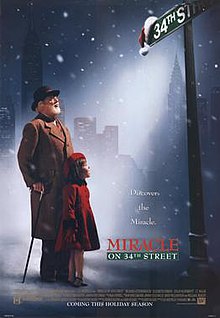
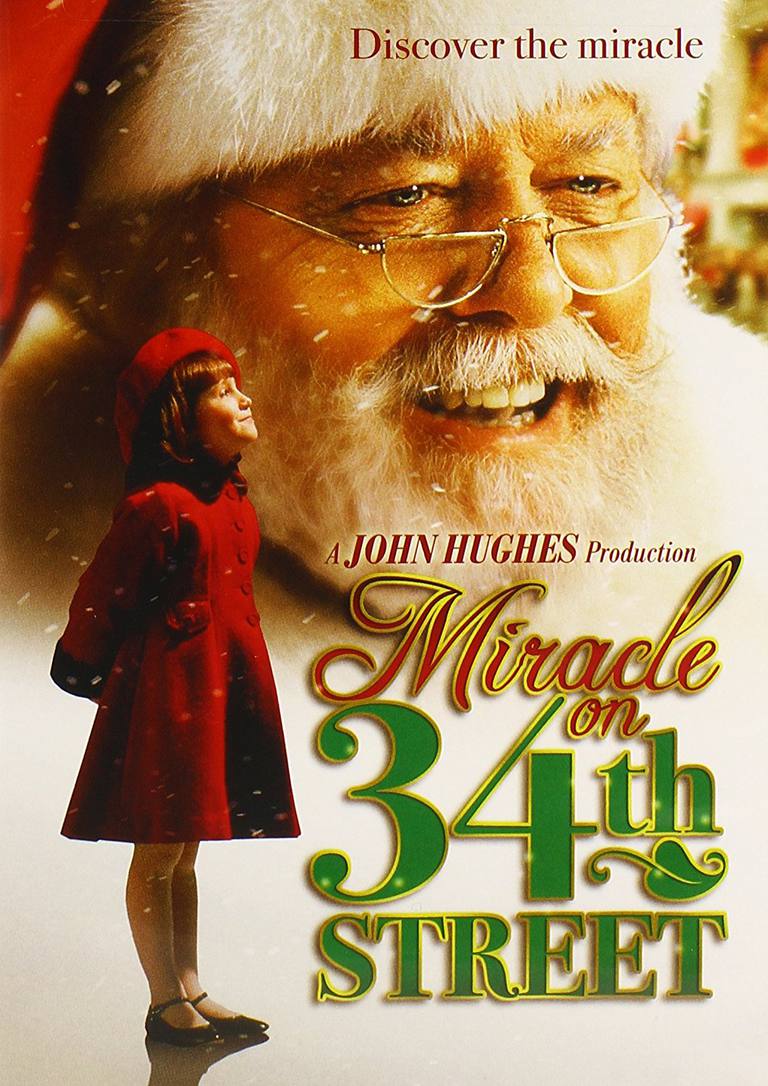
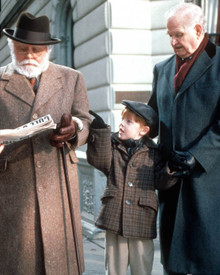





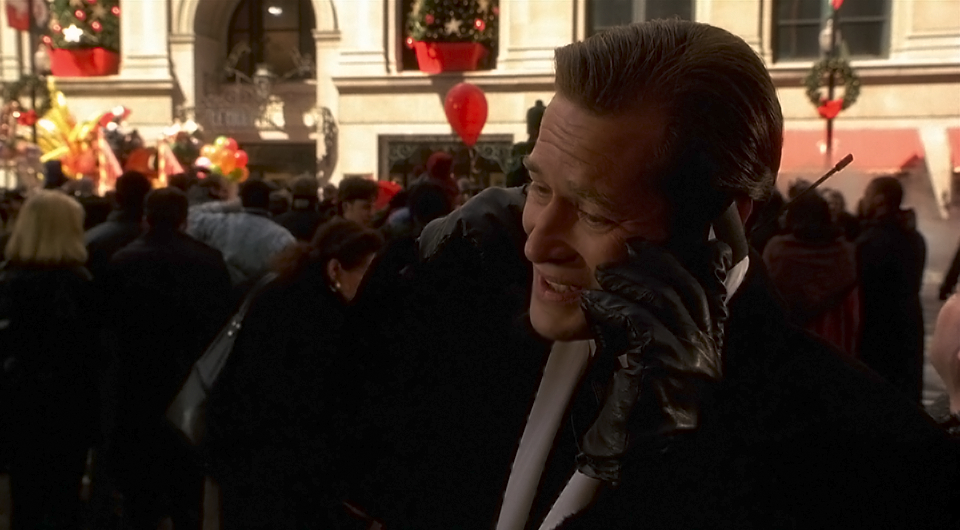
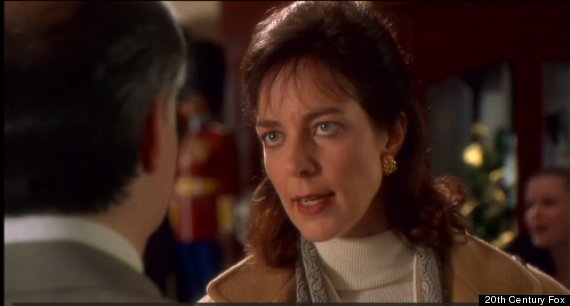



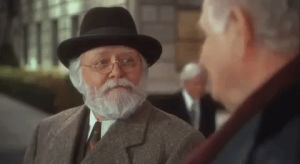



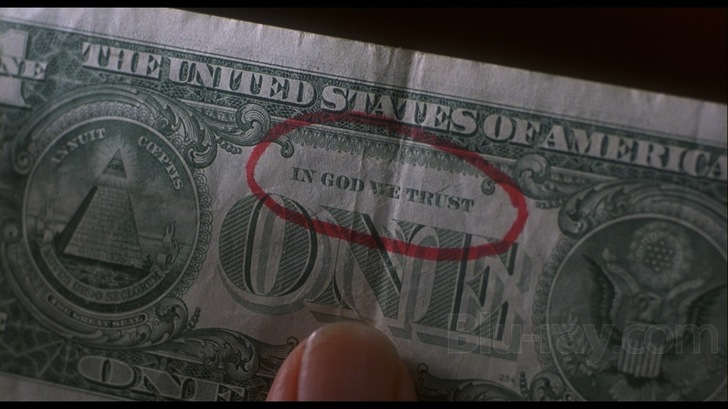










Sunday, November 26, 2023. Thanksgiving was 3 days ago. I decided to search for films from my childhood in the 50s and 60s. I found this odd gif clip from Miracle on 34th Street – the one made in 1994 where Santa is cracking a whip.
Your post is VERY interesting. I knew about the Hays Code but not the Breen code.
I remember a moment when a scene came on in Dynasty and I was watching it with my parents. It, for us, was a graphic sex scene. That was the beginning for me when watching tv with my parents or anyone else could result in dead silence and that awkward sense of wanting to turn the tv off or change the channel.
I tried watching Game of Thrones with friends and had to ask to leave. The violence made my flesh crawl and the porn scenes gave me nightmares.
The scenes you cite in the 1994 film appear to have been cut from the YouTube edition.
I hate to think what TV will be like in the future. I got rid of mine in 2010.
Thank you for posting this. Very interesting.
LikeLike
Tiffany, You are a brilliant writer, and I don’t just mean grammar and punctuation! Your wisdom and intelligence become more evident in each new article. My prayer for the new year is that your works can be read by thousands and millions of people across the world. Your message is so simple, and you make it very easy to understand. Bring back the code. If not, we are doomed. Tiffany, keep up the brilliant work! Love, Daddy (James Brannan, President of PEPS)
LikeLike
Pingback: Breening Thursdays | pure entertainment preservation society